Zone
Crash of an Ilyushin II-86 in Moscow: 14 killed
Date & Time:
Jul 28, 2002 at 1525 LT
Registration:
RA-86060
Survivors:
Yes
Schedule:
Moscow - Saint-Petersburg
MSN:
51483203027
YOM:
1983
Crew on board:
16
Crew fatalities:
Pax on board:
0
Pax fatalities:
Other fatalities:
Total fatalities:
14
Aircraft flight hours:
18363
Circumstances:
The aircraft was leaving Moscow on a ferry flight to St Petersburg following a charter flight from Sochi. On board were 16 crew members, among them 10 employees of the company. Two seconds after takeoff from runway 07L, while climbing to a height of about 200 metres, the stabilizers trimmed to the full up position of 12°. The aircraft nosed up and reached a super critical angle of attack. The crew attempted to regain control by pushing the control column forward but the aircraft stalled and crashed in a huge explosion about 700 metres past the runway end. Two stewardesses were injured while 14 other occupants were killed.
Probable cause:
The cause could not be determined with certainty due to the almost complete destruction of the main and reserve stabilizer control system units as a result of the fire on the ground and lack of information on the primary and backup stabilizer control systems on the flight data recorder, and the lack of crew comments on the cockpit voice recorder. The accident of IL-86 RA-86060 could be caused by an electrical failure in the stabilizer control system, which led to the reverse control response when controlling the stabilizer from the main system or inadequate actions of one of the pilots, expressed in pressing and holding the "pitch up" stabilizer switch on the control column.
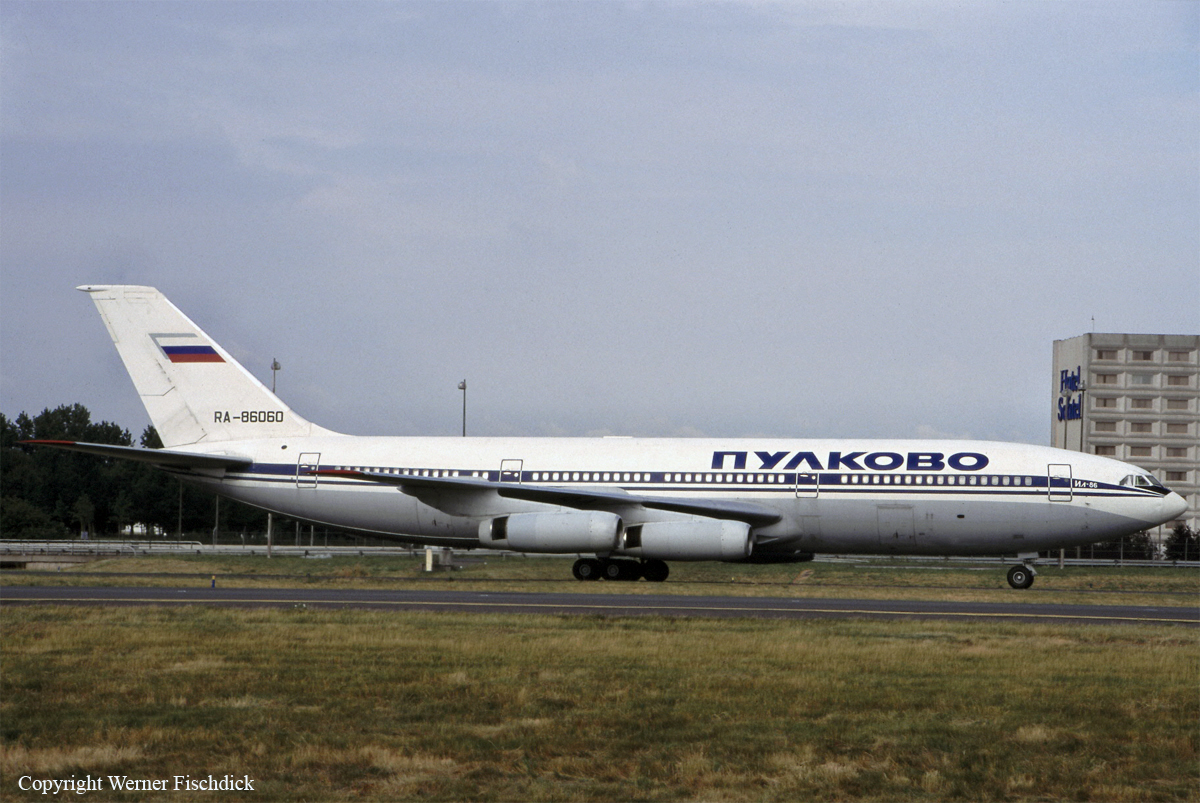
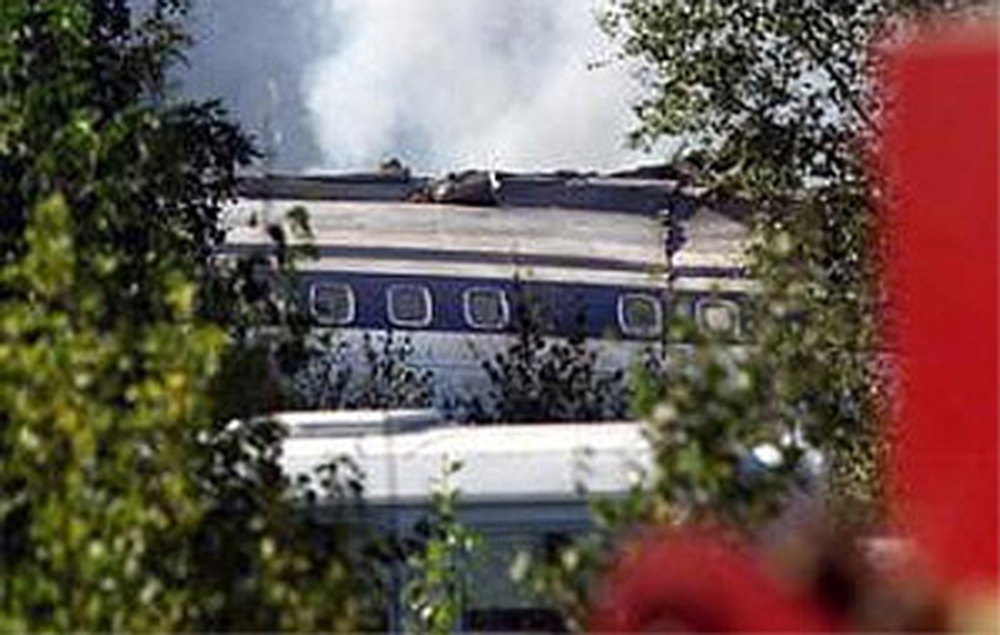
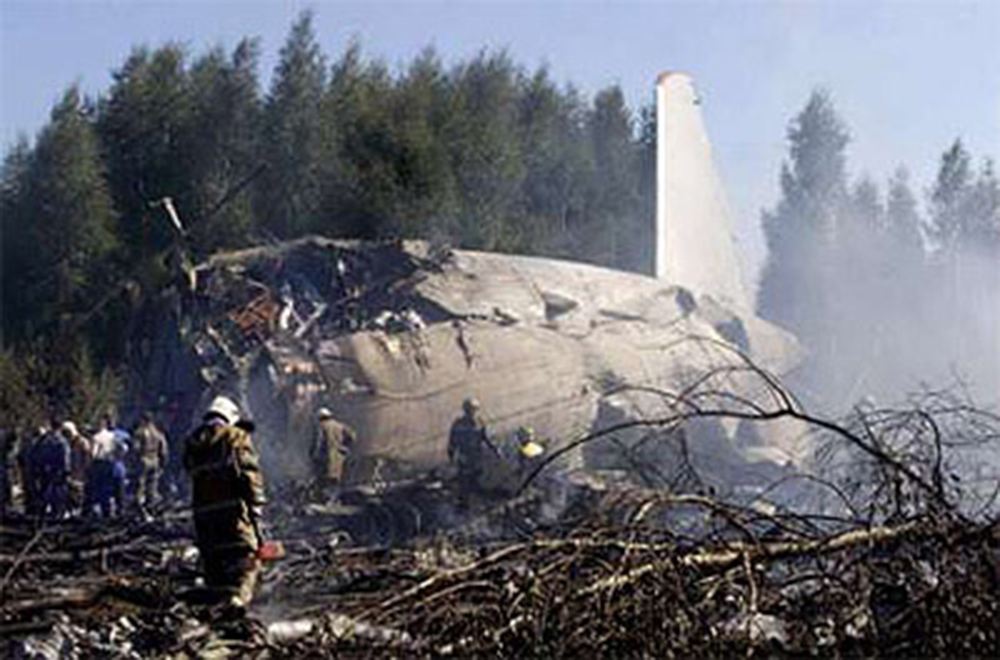
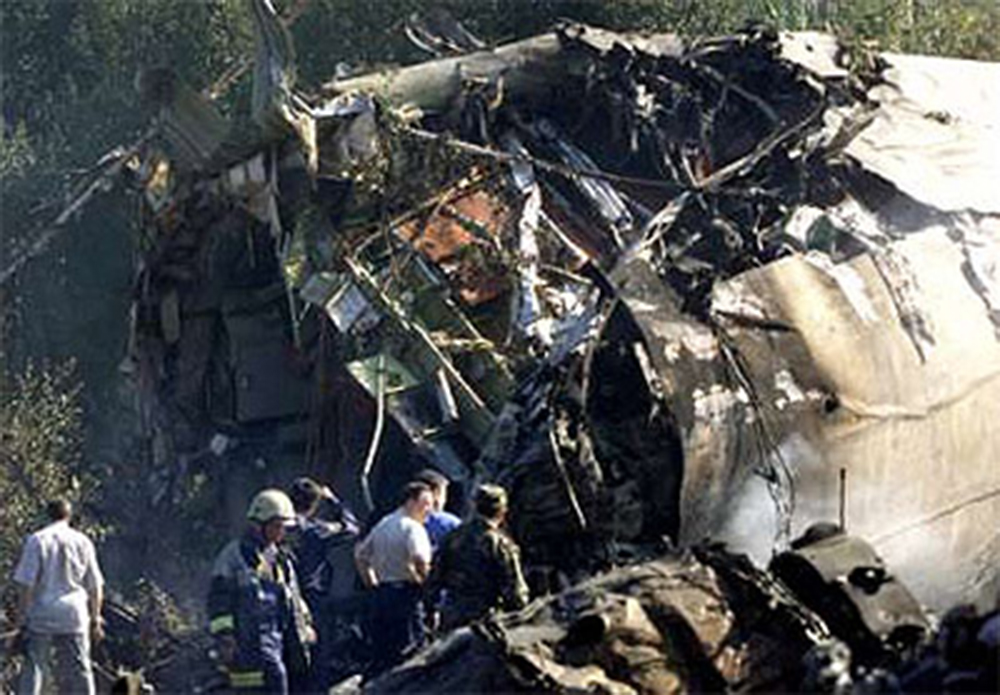
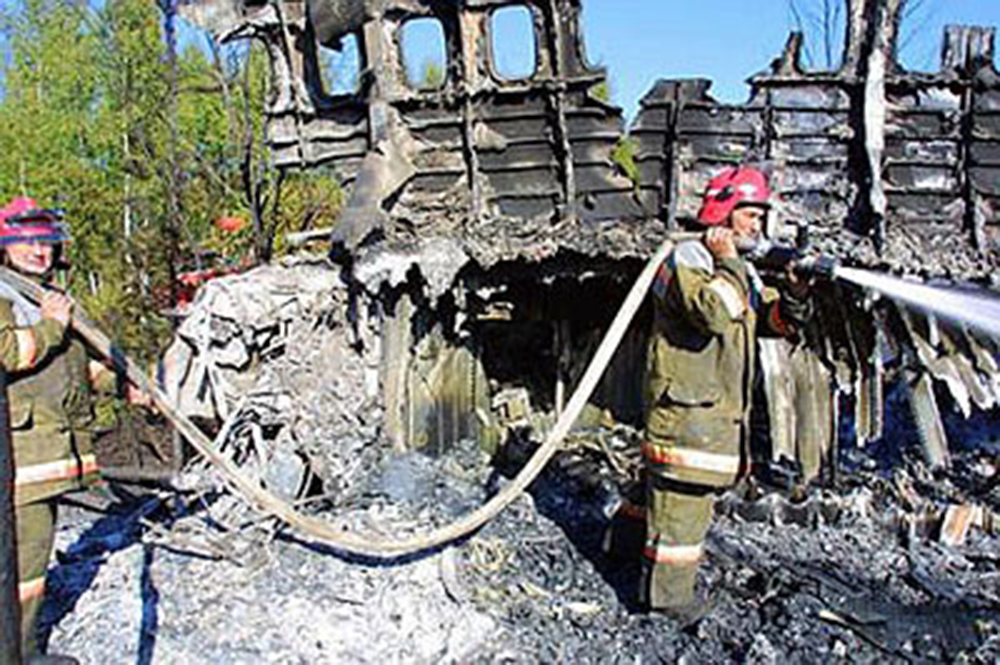
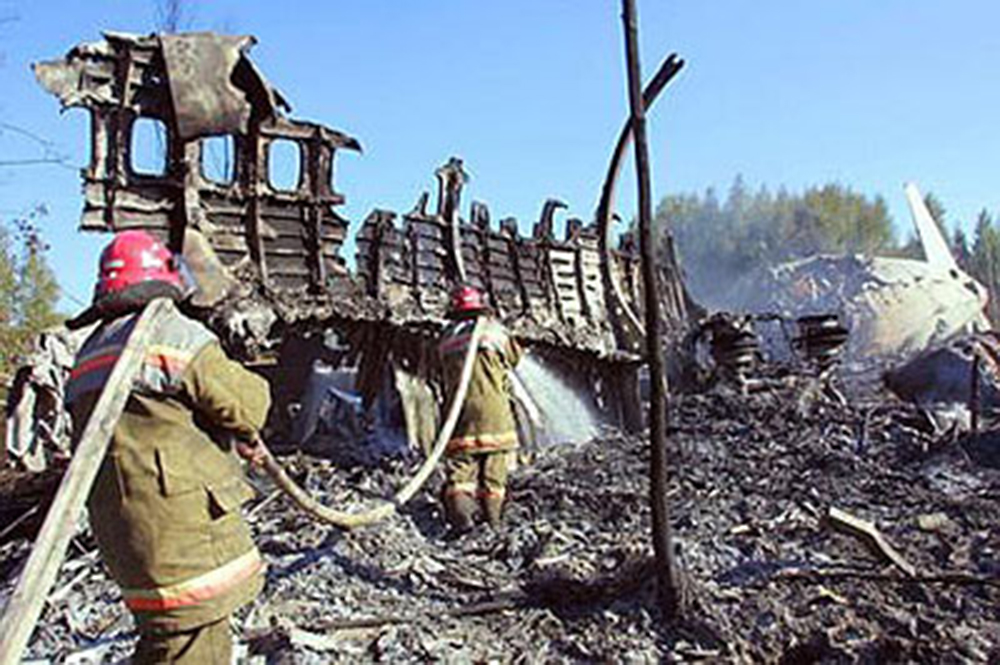
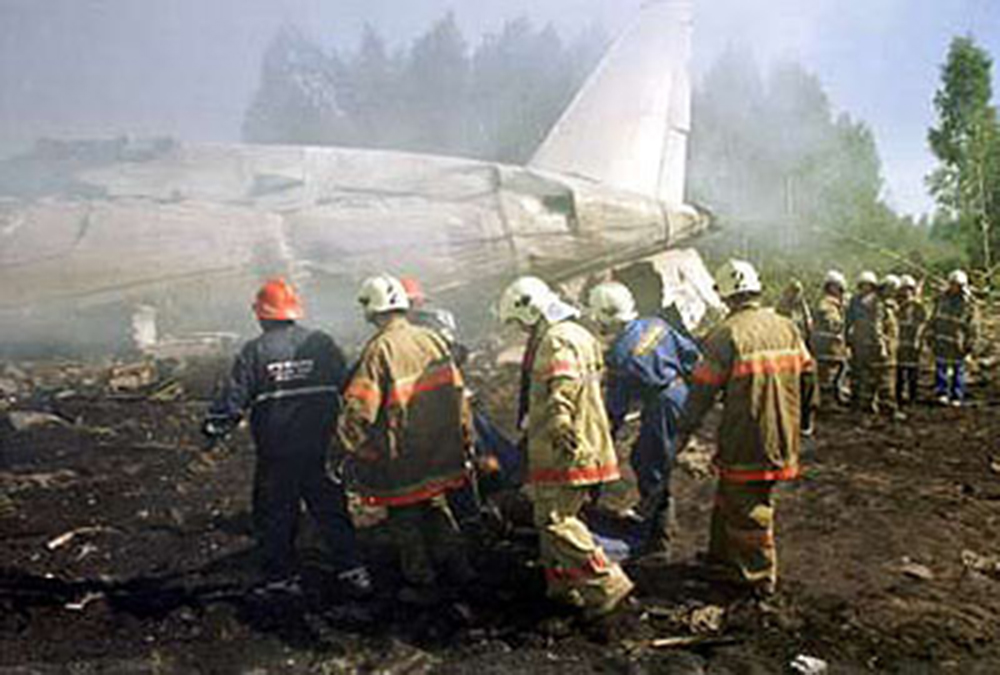
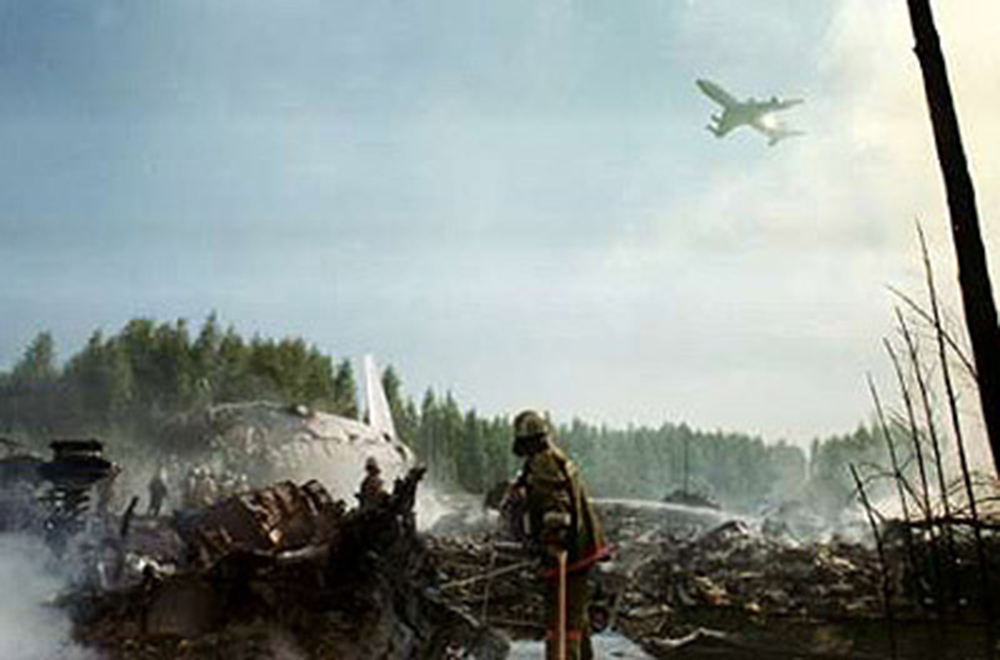
Crash of an Ilyushin II-86 in Dubai
Date & Time:
Sep 21, 2001 at 2009 LT
Registration:
RA-86074
Survivors:
Yes
Schedule:
Moscow - Dubai
MSN:
51483205041
YOM:
1985
Flight number:
SU521
Crew on board:
15
Crew fatalities:
Pax on board:
307
Pax fatalities:
Other fatalities:
Total fatalities:
0
Aircraft flight hours:
23711
Aircraft flight cycles:
7132
Circumstances:
Following an uneventful flight from Moscow, the crew started a night approach to Dubai Intl Airport. Despite this was a non standard procedure, the captain requested that the landing gear circuit breaker be switched off so he could extend the flaps earlier and prior to gear extension. Later on approach, the flight engineer completed the checklist and mistakenly confirmed that gear were down after the crew forgot to turn the circuit breaker on again. The captain continued the approach without proceeding to a verification/confirmation that gear were down, causing the aircraft to land on its belly. It slid for few dozen metres and came to rest with both engines n°2 and 3 on fire as well as the rear part of the cargo compartment. All 321 occupants were evacuated safely while the aircraft was damaged beyond repair.
Probable cause:
Poor approach configuration on part of the crew and violation of published standard operational procedures. Lack of crew coordination and poor crew resources management were considered as contributing factors.

Crash of a Yakovlev Yak-40D in Moscow: 9 killed
Date & Time:
Mar 9, 2000 at 0843 LT
Registration:
RA-88170
Survivors:
No
Schedule:
Moscow - Kiev
MSN:
9 62 08 47
YOM:
1976
Flight number:
VGV9651
Crew on board:
5
Crew fatalities:
Pax on board:
4
Pax fatalities:
Other fatalities:
Total fatalities:
9
Aircraft flight hours:
21428
Aircraft flight cycles:
20497
Circumstances:
The initial STD was 0800LT but as the passengers were late, the departure was postponed. Apparently to avoid to miss the slot, the crew precipitated the departure. After liftoff, the undercarriage were retracted immediately. At a speed of 230 km/h, the aircraft climbed to a height of 15 metres then rolled to the left at an angle of 65° and crashed 1,200 metres from the departure point. The aircraft was destroyed by impact forces and there was no fire. All nine occupants were killed, among them the Russian journalist Artiom Borovik. At the time of the departure, there were snow falls at Moscow Airport.
Probable cause:
The aircraft stalled after liftoff due to a loss of lift due to the combination of the following contributing factors:
- Poor flight preparation,
- The crew expedited the takeoff procedure,
- The aircraft was manually cleaned from snow prior to departure but not deiced,
- The flaps were down at 11° instead the required 20°,
- The elevators were positioned at -4,3° instead of +2,2°,
- The rotation was initiated at an insufficient speed,
- Wings and critical surfaces were still contaminated with frost.
- Poor flight preparation,
- The crew expedited the takeoff procedure,
- The aircraft was manually cleaned from snow prior to departure but not deiced,
- The flaps were down at 11° instead the required 20°,
- The elevators were positioned at -4,3° instead of +2,2°,
- The rotation was initiated at an insufficient speed,
- Wings and critical surfaces were still contaminated with frost.
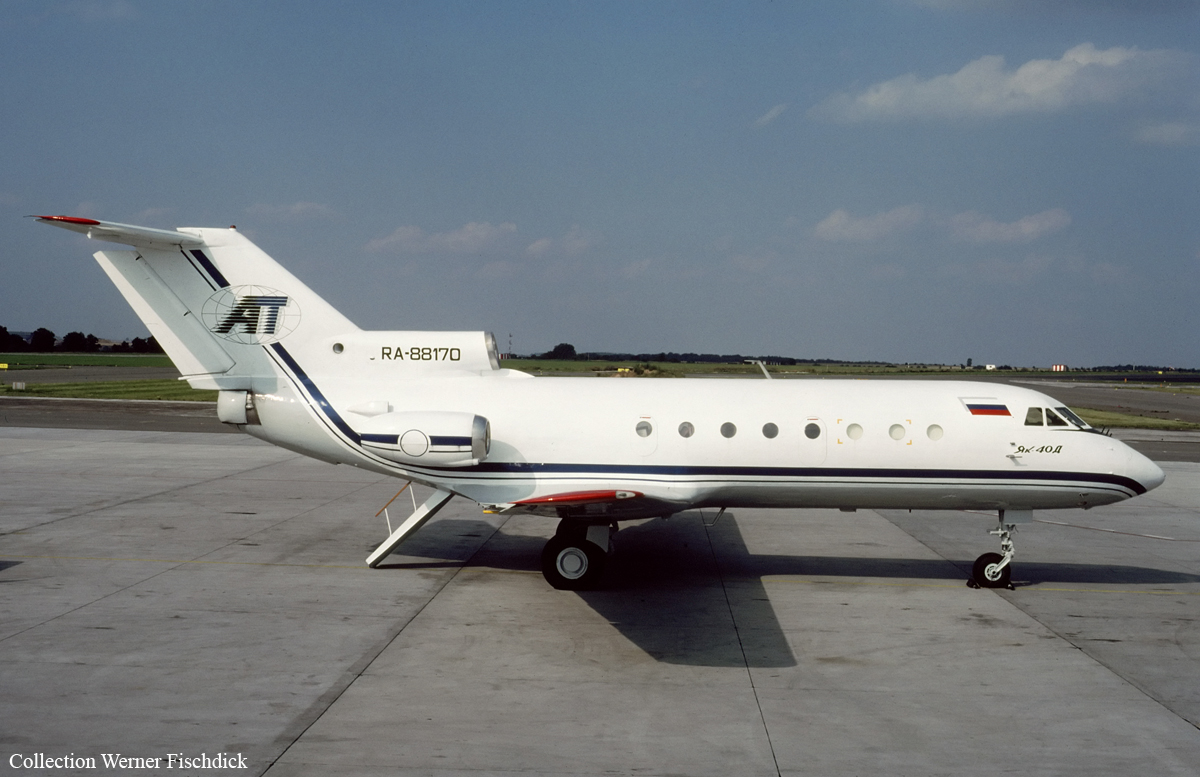

Crash of a Learjet 35A in Moscow: 1 killed
Date & Time:
Dec 14, 1994 at 2359 LT
Registration:
D-CATY
Survivors:
Yes
Schedule:
Munich - Moscow - Magnitogorsk
MSN:
35A-114
YOM:
1977
Crew on board:
3
Crew fatalities:
Pax on board:
4
Pax fatalities:
Other fatalities:
Total fatalities:
1
Circumstances:
The twin engine aircraft was engaged in a charter flight from Munich to Magnitogorsk and back, with an intermediate stop in Moscow to pick up a Russian navigator. Shortly after takeoff, at a height of about 15 metres, the aircraft banked left and impacted the ground some 30 metres to the left of the runway. Out of control, it rolled for about 325 metres before coming to rest. A pilot was killed while six other occupants were seriously injured.

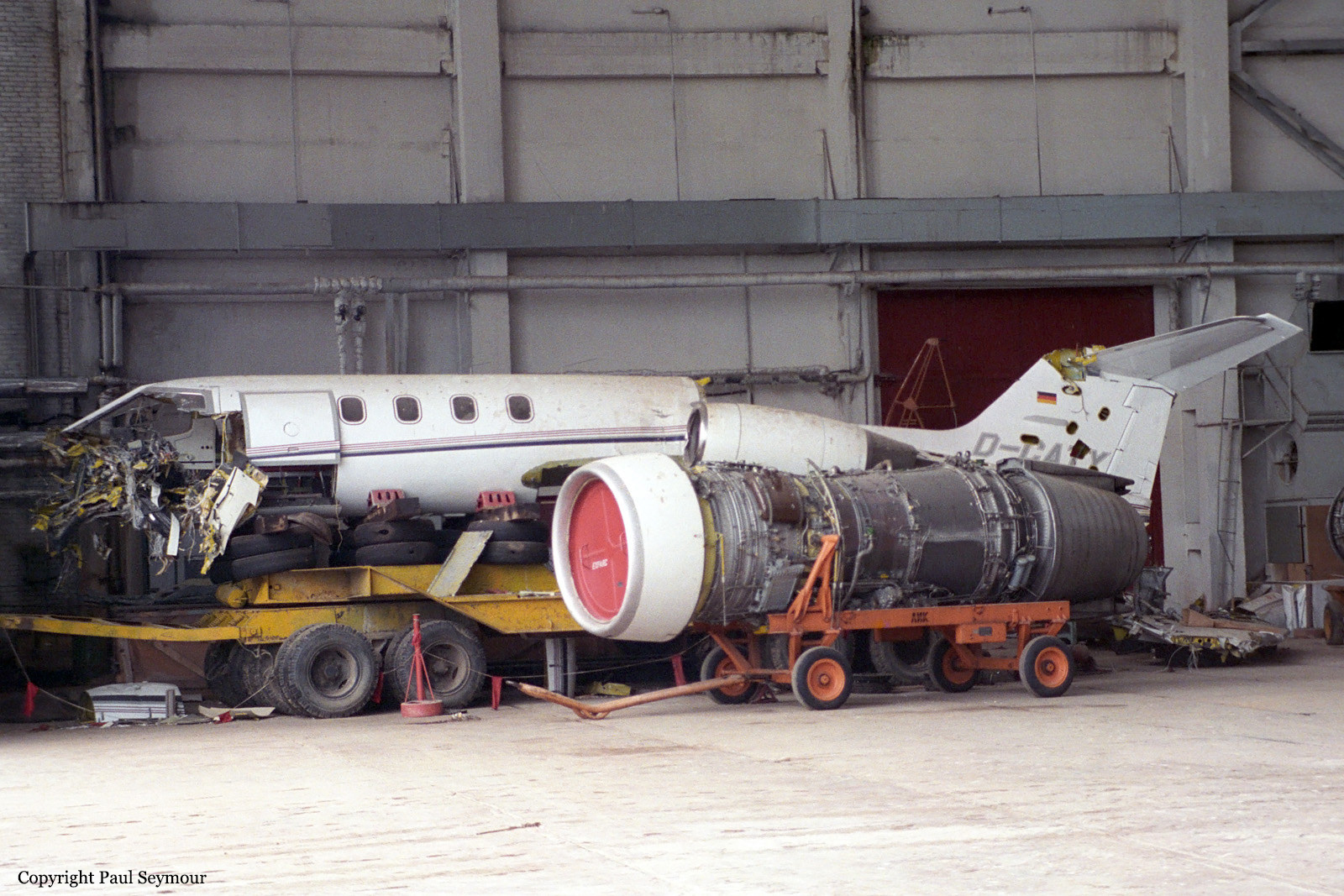
Crash of a Tupolev TU-134A-3 in Arkhangelsk
Date & Time:
May 7, 1994 at 1242 LT
Registration:
RA-65976
Survivors:
Yes
Schedule:
Moscow - Arkhangelsk
MSN:
3 35 20 07
YOM:
1973
Flight number:
SU2315
Crew on board:
6
Crew fatalities:
Pax on board:
56
Pax fatalities:
Other fatalities:
Total fatalities:
0
Aircraft flight hours:
33606
Aircraft flight cycles:
21071
Circumstances:
On approach to Arkhangelsk-Talagi, the crew encountered technical problems with the landing gear that could not be lowered. Several manual attempts were made and finally, only the right main gear remained stuck in its wheel well. The captain decided to land in such configuration. After touchdown, the aircraft slid on the ground then veered off runway and came to rest in a grassy area. All 62 occupants escaped uninjured while the aircraft was damaged beyond repair.
Probable cause:
The right main gear could not be lowered because of a breakage of the filling connection of the hydraulic tank due to metal fatigue while the aircraft was taxiing at Moscow-Sheremetyevo Airport. The fitting was blown out under pressure and damaged hydraulic lines, causing a hydraulic fluid leak and the oil pressure to drop.
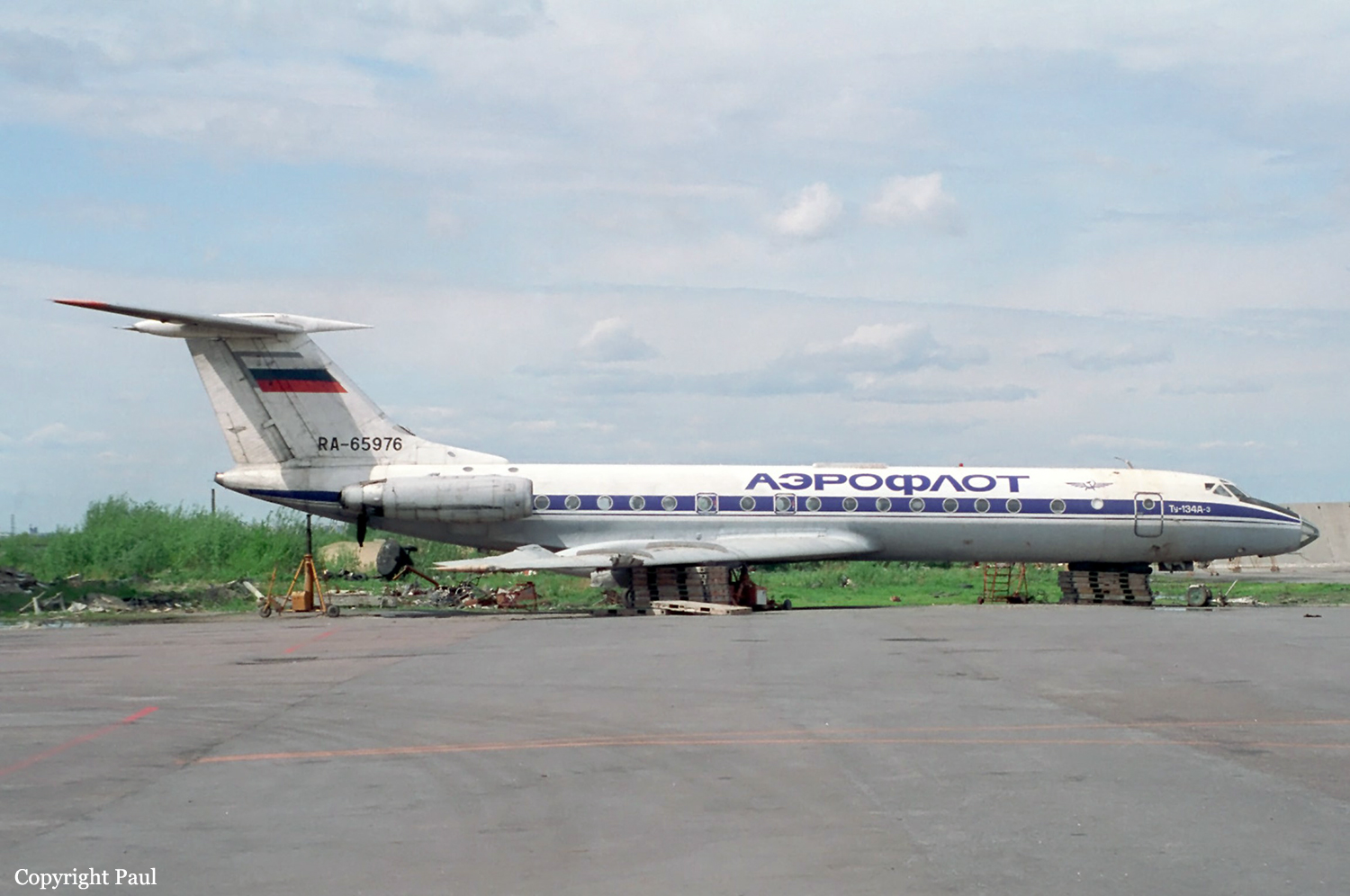

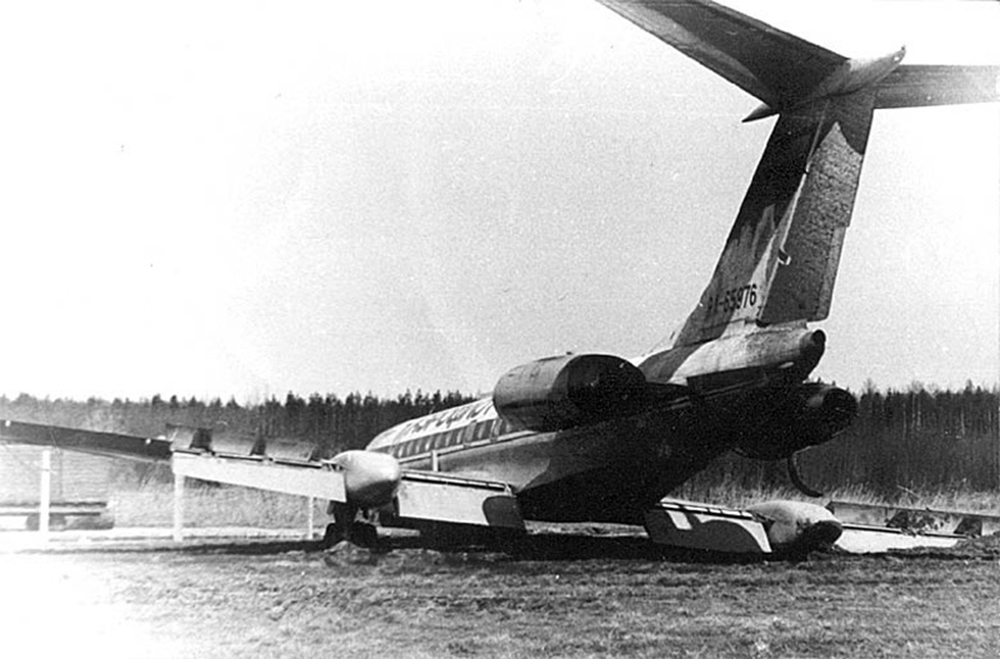
Crash of an Airbus A310-308 near Mezhdurechensk: 75 killed
Date & Time:
Mar 23, 1994 at 0057 LT
Registration:
F-OGQS
Survivors:
No
Schedule:
Moscow - Hong Kong
MSN:
596
YOM:
1991
Flight number:
SU593
Crew on board:
12
Crew fatalities:
Pax on board:
63
Pax fatalities:
Other fatalities:
Total fatalities:
75
Captain / Total hours on type:
38.00
Copilot / Total hours on type:
440
Aircraft flight hours:
5375
Aircraft flight cycles:
846
Circumstances:
While cruising by night at the assigned altitude of 10,100 metres, approaching the Novokuznetsk reporting point, the captain's daughter entered the cockpit. She was allowed to sit the left-hand seat while the captain demonstrated some autopilot features, using HDG/S and NAV submodes to alter the heading. The captain's son then took the left front seat. The captain intended to demonstrate the same manoeuvre when his son asked if he could turn the control wheel. He then turned the wheel slightly (applying a force of between 8-10 kg) and held it in that position for a few seconds before returning the wheel to the neutral position. The captain then demonstrated the same features as he did to his daughter and ended by using the NAV submode to bring the aircraft back on course. As the autopilot attempted to level the aircraft at its programmed heading, it came in conflict with the inputs from the control wheel which was blocked in a neutral position. Forces on the control wheel increased to 12-13 kg until the torque limiter activated by disconnecting the autopilot servo from the aileron control linkage. The autopilot remained engaged however. The aircraft then started to bank to the right at 2,5° per second, reaching 45° when the autopilot wasn't able to maintain altitude. The A310 started buffeting, which caught the attention of the captain who told the copilot to take control while he was trying to regain his seat. The seat of the copilot was fully aft, so it took him an additional 2-3 seconds to get to the control wheel. The bank continued to 90°, the aircraft pitched up steeply with +4,8g accelerations, stalled and entered a spin. Two minutes and six seconds later the aircraft struck the ground. The aircraft disintegrated on impact and all 75 occupants were killed, among them 25 foreigners.
Probable cause:
The accident was caused by a stall, spin and impact with the ground resulting from a combination of the following factors:
1. The decision by the PIC to allow an unqualified and unauthorized outsider (his son) to occupy his duty station and intervene in the flying of the aeroplane.
2. The execution of demonstration manoeuvres that were not anticipated in the flight plan or flight situation, with the PIC operating the autopilot while not at his duty station.
3. Application by the outsider and the co-pilot of control forces that interfered with the functioning of the roll channel of the autopilot (and are not recommended in the A310 flight manual), thus overriding the autopilot and disconnecting it from the aileron control linkage.
4. The copilot and PIC failed to detect the fact that the autopilot had become disconnected from the aileron control linkage, probably because:
- The A310 instrumentation has no declutch warning. The provision of signals in accordance with the requirements of Airworthiness Standard NLGS-3, para. 8.2.7.3., and international recommended practices, could have enabled the crew to detect the disengaged autopilot in a timely manner.
- The copilot and PIC may have been unaware of the peculiarities of the declutching function and the actions to be taken in such a situation because of a lack of appropriate information in the flight manual and crew training programme;
- It was difficult for the co-pilot to detect the disengagement of the autopilot by feel, either because of the small forces on his control column or because he took changing forces to be the result of Eldar's actions;
- The PIC was away from his position and distracted by the conversation with his daughter.
5. A slight, unintentional further turn of the control wheel(s) following disengagement of the autopilot caused a right roll to develop.
6. The PIC and copilot failed to detect the excessive right bank angle, which exceeded operating limits, and were late in re-entering the aircraft control loop because their attention was focussed on determining why the aircraft had banked to the right, a manoeuvre they interpreted as entry into a holding area with either no course line or with a new (false) course line generated on the navigational display.
A strong signal indicating that the aeroplane had exceeded the allowable operating bank angle, taking account of the delay in recognizing and assessing the situation and making a decision, could in this situation have attracted the crew's attention and enabled them to detect the bank at an earlier stage.
7. The aeroplane was subjected to buffeting and high angles of attack because the autopilot continued to perform its height-keeping function even after the actuator declutched and as the right roll developed, until the pilot disconnected it by overriding its longitudinal channel.
8. Inappropriate and ineffective action on the part of the copilot, who failed to disconnect the autopilot and to push the control column forward when the buffeting occurred and the aeroplane entered an unusual attitude (high angles of attack and pitch). These actions, which caused the aeroplane to stall and spin, could have resulted from:
- the presence of an outsider in the left-hand pilot's seat and the resulting delay before the PIC re-entered the aeroplane control loop;
- the less-than-optimum working posture of the copilot, whose seat was pushed back to its rearmost position;
- the occurrence, 2 seconds following the onset of buffeting, of an unintentional pitching up of the aeroplane, which sharply increased the angle of attack and reduced lateral controllability;
- unpreparedness of the crew to act in this situation because of lack of appropriate drills in the training programme;
- temporary loss of spatial orientation in night conditions.
1. The decision by the PIC to allow an unqualified and unauthorized outsider (his son) to occupy his duty station and intervene in the flying of the aeroplane.
2. The execution of demonstration manoeuvres that were not anticipated in the flight plan or flight situation, with the PIC operating the autopilot while not at his duty station.
3. Application by the outsider and the co-pilot of control forces that interfered with the functioning of the roll channel of the autopilot (and are not recommended in the A310 flight manual), thus overriding the autopilot and disconnecting it from the aileron control linkage.
4. The copilot and PIC failed to detect the fact that the autopilot had become disconnected from the aileron control linkage, probably because:
- The A310 instrumentation has no declutch warning. The provision of signals in accordance with the requirements of Airworthiness Standard NLGS-3, para. 8.2.7.3., and international recommended practices, could have enabled the crew to detect the disengaged autopilot in a timely manner.
- The copilot and PIC may have been unaware of the peculiarities of the declutching function and the actions to be taken in such a situation because of a lack of appropriate information in the flight manual and crew training programme;
- It was difficult for the co-pilot to detect the disengagement of the autopilot by feel, either because of the small forces on his control column or because he took changing forces to be the result of Eldar's actions;
- The PIC was away from his position and distracted by the conversation with his daughter.
5. A slight, unintentional further turn of the control wheel(s) following disengagement of the autopilot caused a right roll to develop.
6. The PIC and copilot failed to detect the excessive right bank angle, which exceeded operating limits, and were late in re-entering the aircraft control loop because their attention was focussed on determining why the aircraft had banked to the right, a manoeuvre they interpreted as entry into a holding area with either no course line or with a new (false) course line generated on the navigational display.
A strong signal indicating that the aeroplane had exceeded the allowable operating bank angle, taking account of the delay in recognizing and assessing the situation and making a decision, could in this situation have attracted the crew's attention and enabled them to detect the bank at an earlier stage.
7. The aeroplane was subjected to buffeting and high angles of attack because the autopilot continued to perform its height-keeping function even after the actuator declutched and as the right roll developed, until the pilot disconnected it by overriding its longitudinal channel.
8. Inappropriate and ineffective action on the part of the copilot, who failed to disconnect the autopilot and to push the control column forward when the buffeting occurred and the aeroplane entered an unusual attitude (high angles of attack and pitch). These actions, which caused the aeroplane to stall and spin, could have resulted from:
- the presence of an outsider in the left-hand pilot's seat and the resulting delay before the PIC re-entered the aeroplane control loop;
- the less-than-optimum working posture of the copilot, whose seat was pushed back to its rearmost position;
- the occurrence, 2 seconds following the onset of buffeting, of an unintentional pitching up of the aeroplane, which sharply increased the angle of attack and reduced lateral controllability;
- unpreparedness of the crew to act in this situation because of lack of appropriate drills in the training programme;
- temporary loss of spatial orientation in night conditions.
Final Report:

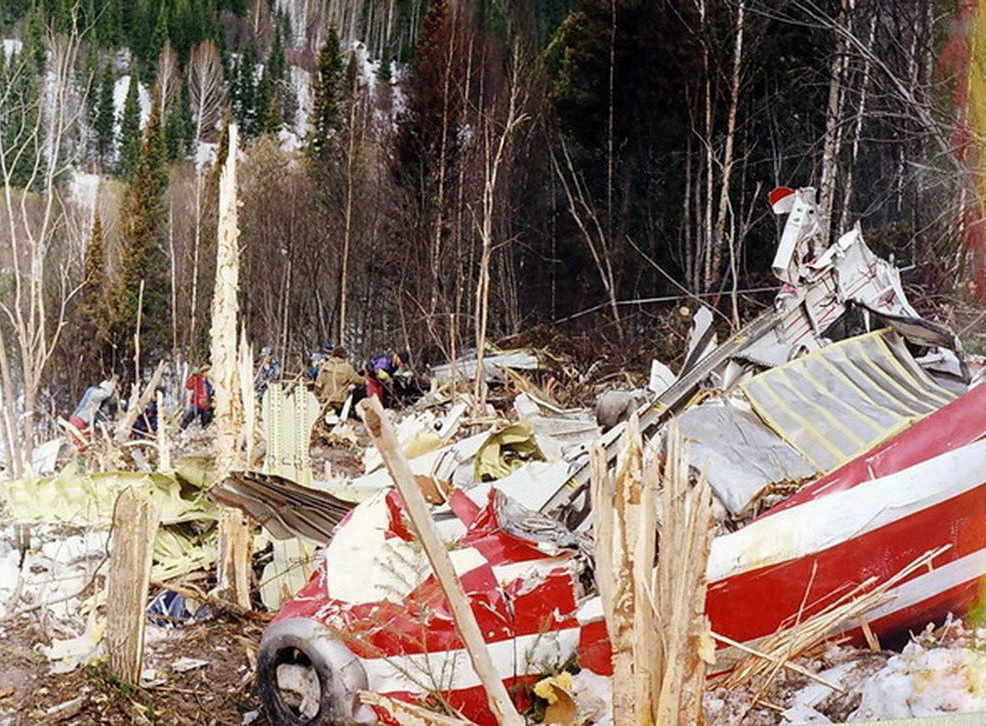


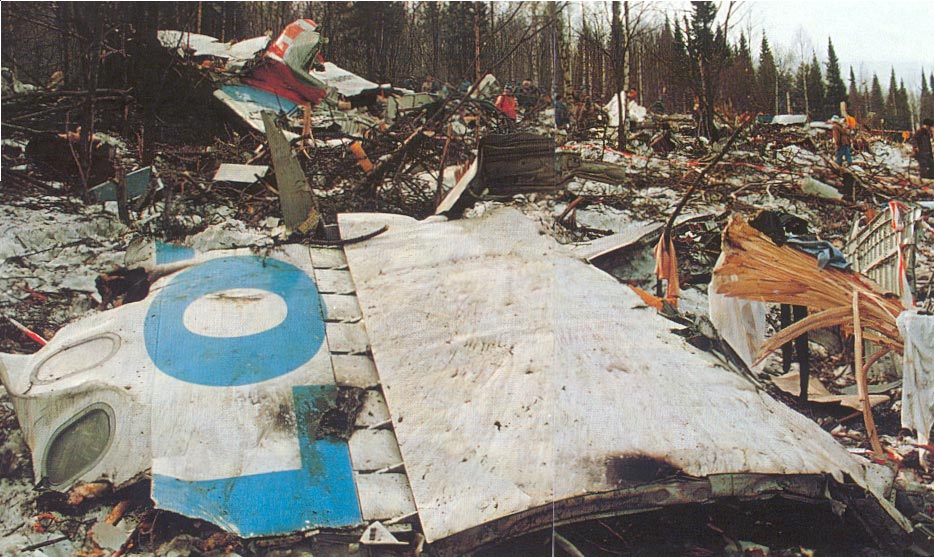





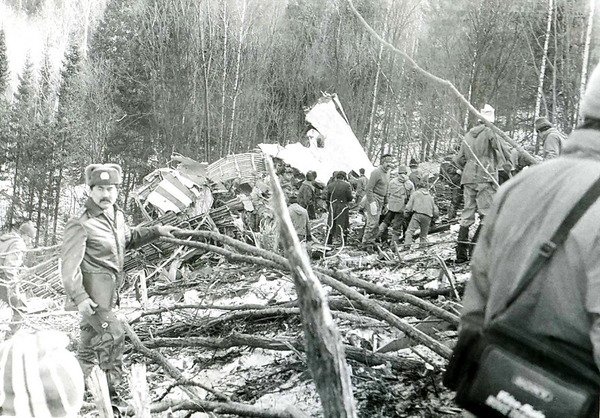
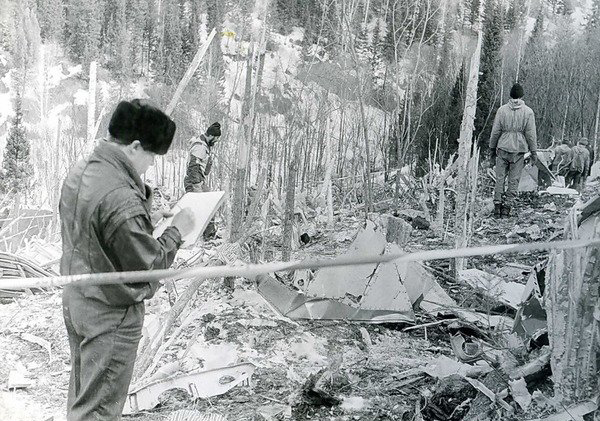
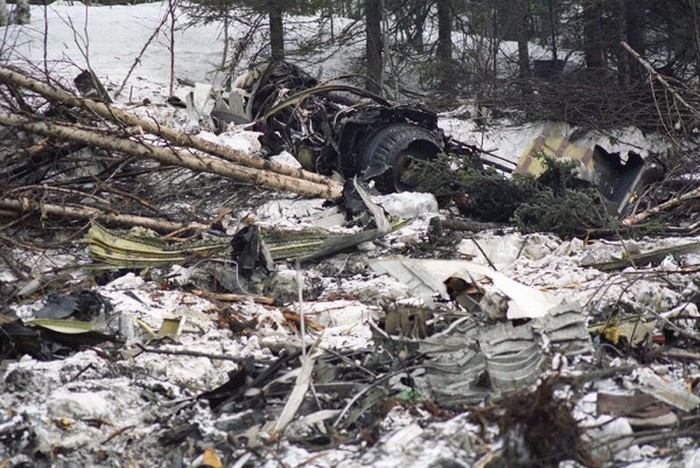
Crash of a Tupolev TU-154M in Velichovská
Date & Time:
Nov 17, 1990 at 1521 LT
Registration:
CCCP-85664
Survivors:
Yes
Schedule:
Basel - Moscow
MSN:
89A818
YOM:
1989
Crew on board:
6
Crew fatalities:
Pax on board:
0
Pax fatalities:
Other fatalities:
Total fatalities:
0
Circumstances:
The aircraft departed Basel Airport on a cargo flight to Moscow, carrying six crew members and a load of cigarettes. While cruising at an altitude of 10,600 meters, the crew declared an emergency after smoke spread in the cabin, and elected to divert to Prague-Ruzyne Airport. As the situation deteriorated on board, the crew was forced to attempt an emergency landing in an open field located in Velichovská, near Jaroměř. In a flapless configuration, the aircraft landed at a speed of 370-390 km/h in a marshy field, struck a two-meters embankment and crashed in several pieces, bursting into flames. All six crew members escaped with minor injuries.
Probable cause:
The exact cause of the fire on board could not be determined with certainty but it is believed that the likely cause could have been an electric stove left on in the side kitchen.
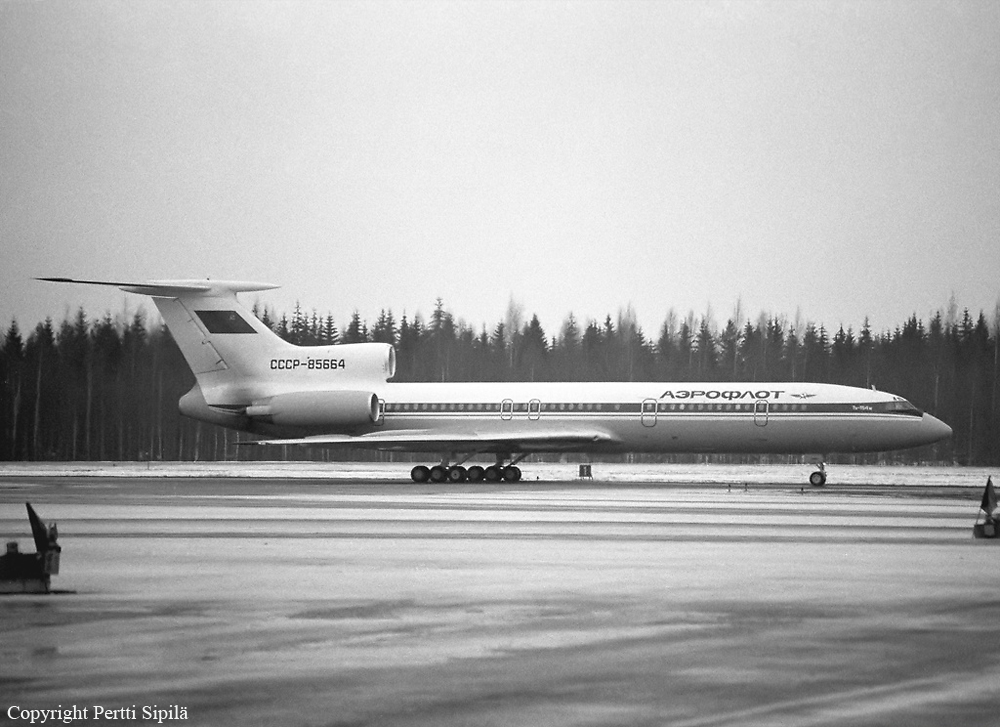

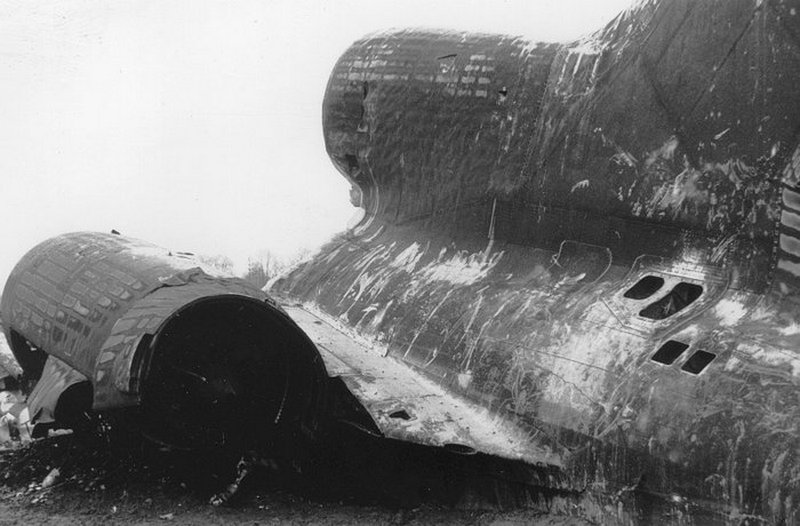
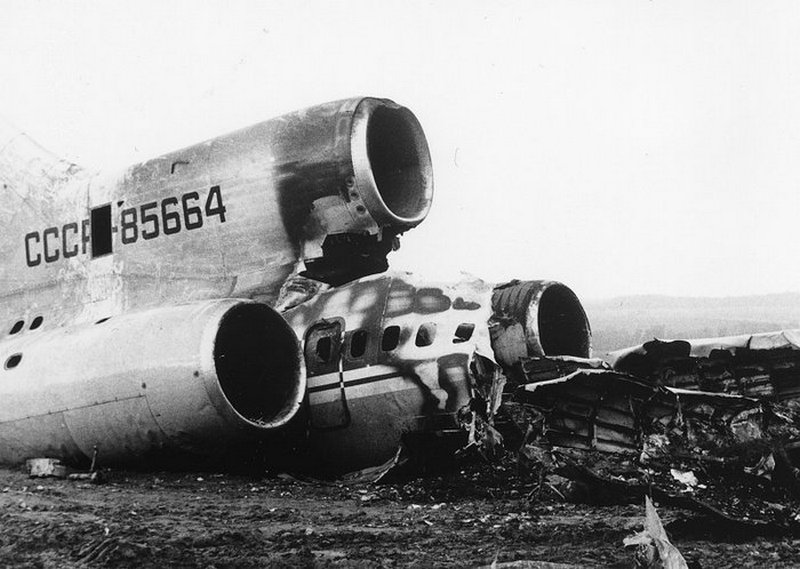

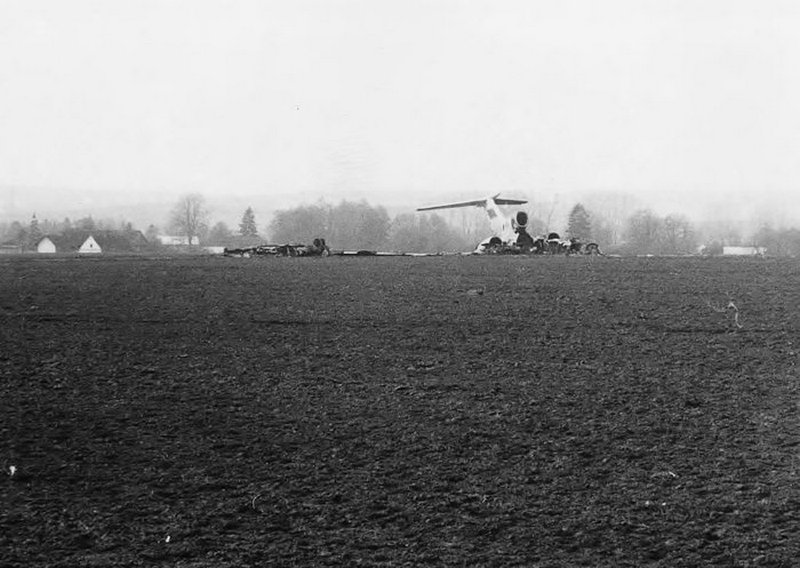
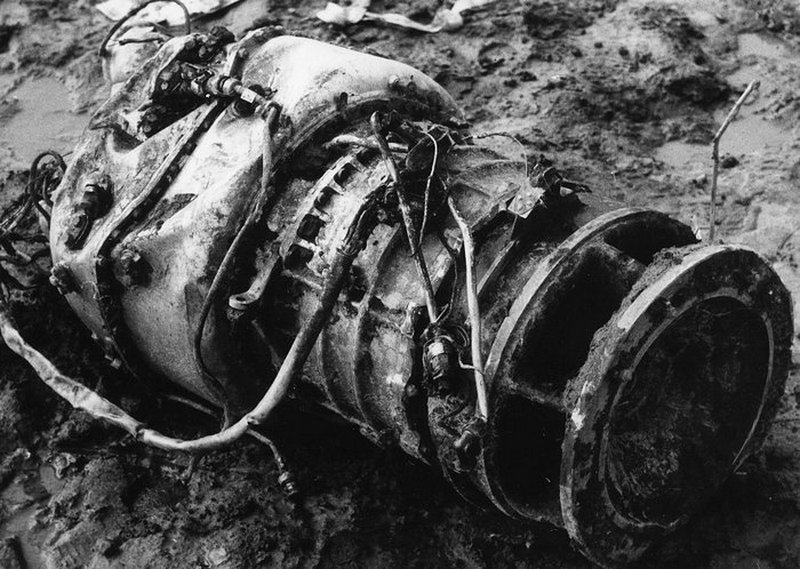
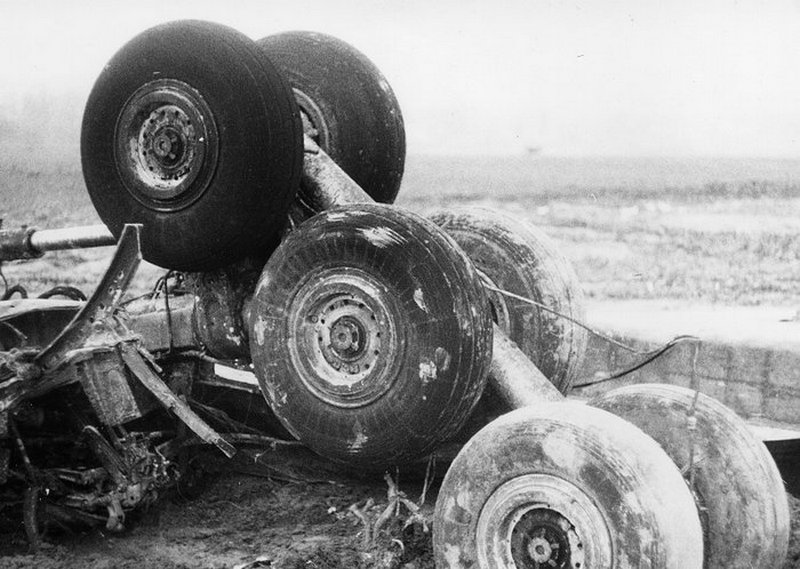
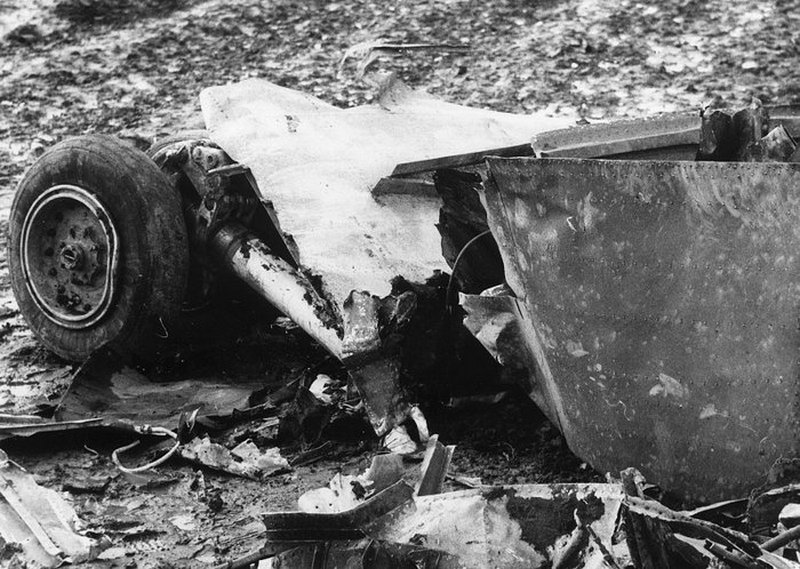
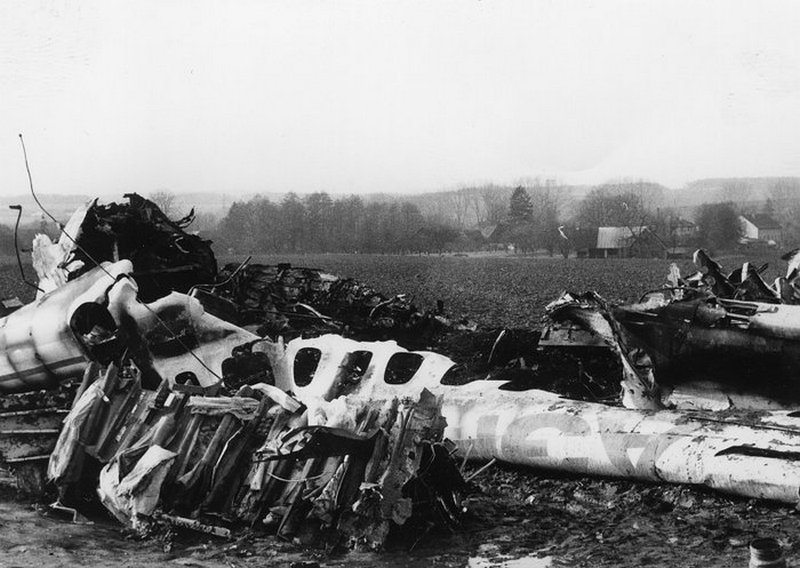
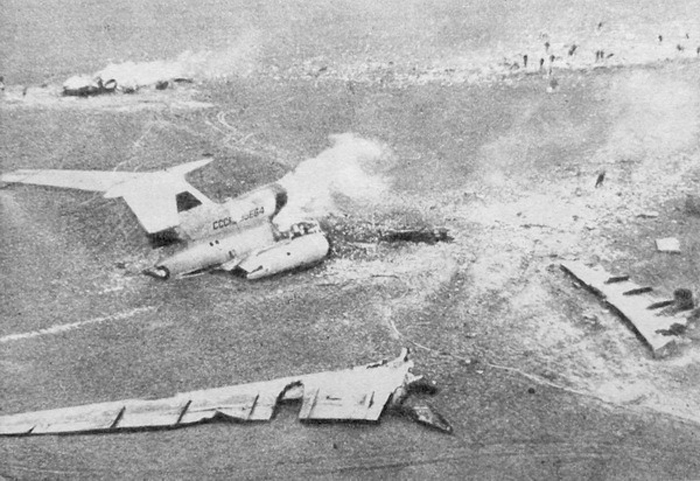


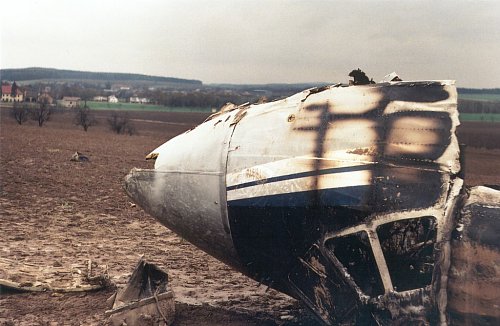

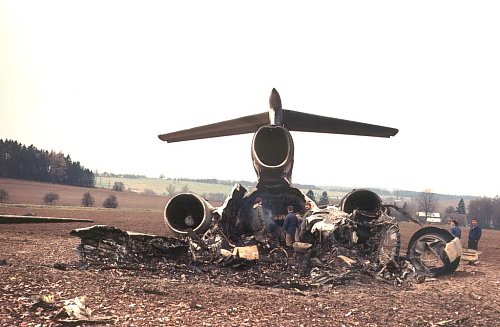
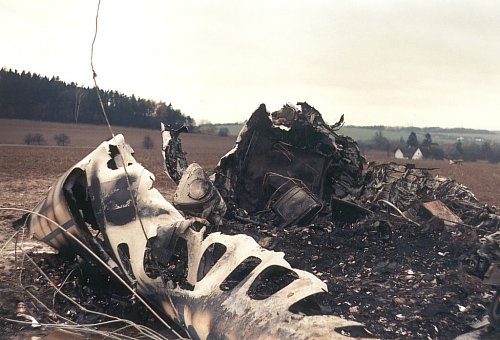
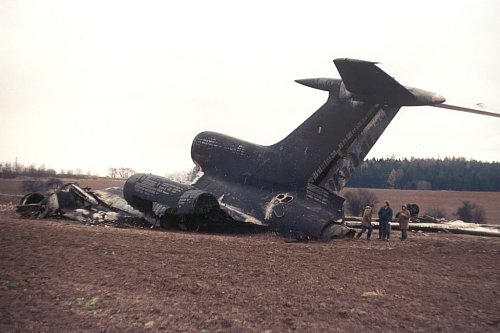
Crash of an Ilyushin II-62M in Berlin: 21 killed
Date & Time:
Jun 17, 1989 at 0628 LT
Registration:
DDR-SEW
Survivors:
Yes
Schedule:
Berlin - Moscow
MSN:
2850324
YOM:
1988
Flight number:
IF102
Crew on board:
10
Crew fatalities:
Pax on board:
103
Pax fatalities:
Other fatalities:
Total fatalities:
21
Aircraft flight hours:
1939
Aircraft flight cycles:
546
Circumstances:
Interflug flight 102, an Ilyushin Il-62M, was destroyed following a runway excursion accident on takeoff from Berlin-Schönefeld Airport, East Germany. Of the 113 occupants, 21 were killed. At 06:20 hours local time the engines were started. Immediately thereafter, the flight control surfaces were unlocked, a process which, according to the cockpit voice recorder, was not completed. The crew did not carry out the necessary check of the warning panel on the condition of the elevator. While taxiing for departure, the captain checked for the second time the movement of the elevators but failed to notice they were locked. The aircraft was cleared for takeoff from runway 25L and the engines were adjusted to rated power due to the low take-off mass of 113 tons. At 06:28:05 the aircraft reached VR. The captain pulled the control column during VR, but the aircraft did not respond. Four seconds later he called out to abort the takeoff. At this time the aircraft had attained a speed of 293 km/h. Instead of using reverse thrust, the flight engineer shut down all four engines. The speed at this time was 303 km/h and the remaining distance to the end of the runway was about 940 meters. The aircraft rolled over the end of the runway at a speed of 262 km/h and slightly to the left of the centerline. During the emergency braking five tires of the main landing gear had been destroyed. The airaft crossed an excavation pit of 40 cm deep, causing the the right main landing gear to collapse. It then collided with a water tank, concrete piles of the airport fence, a road embankment and six trees. At 06:28:37 the aircraft came to rest and burst into flames. Within two minutes, 82 passengers could be rescued alive from the fuselage, which had been broken into three parts. All 10 crew members survived.
Probable cause:
Investigations were unable to determine the exact cause of the accident. A technical problem with rudder controls or components could not be excluded and an error on part of the flying crew could not be proven.

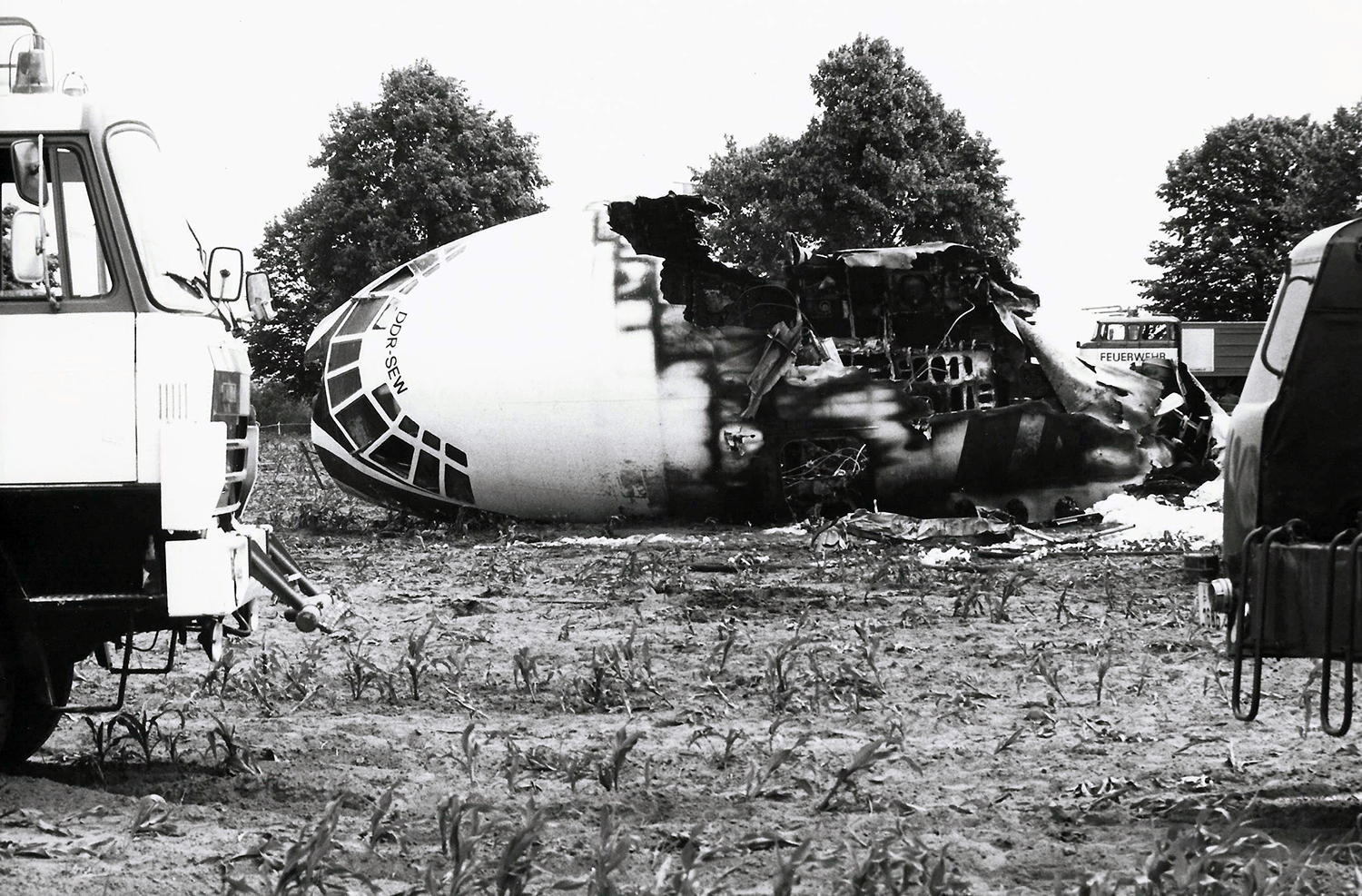
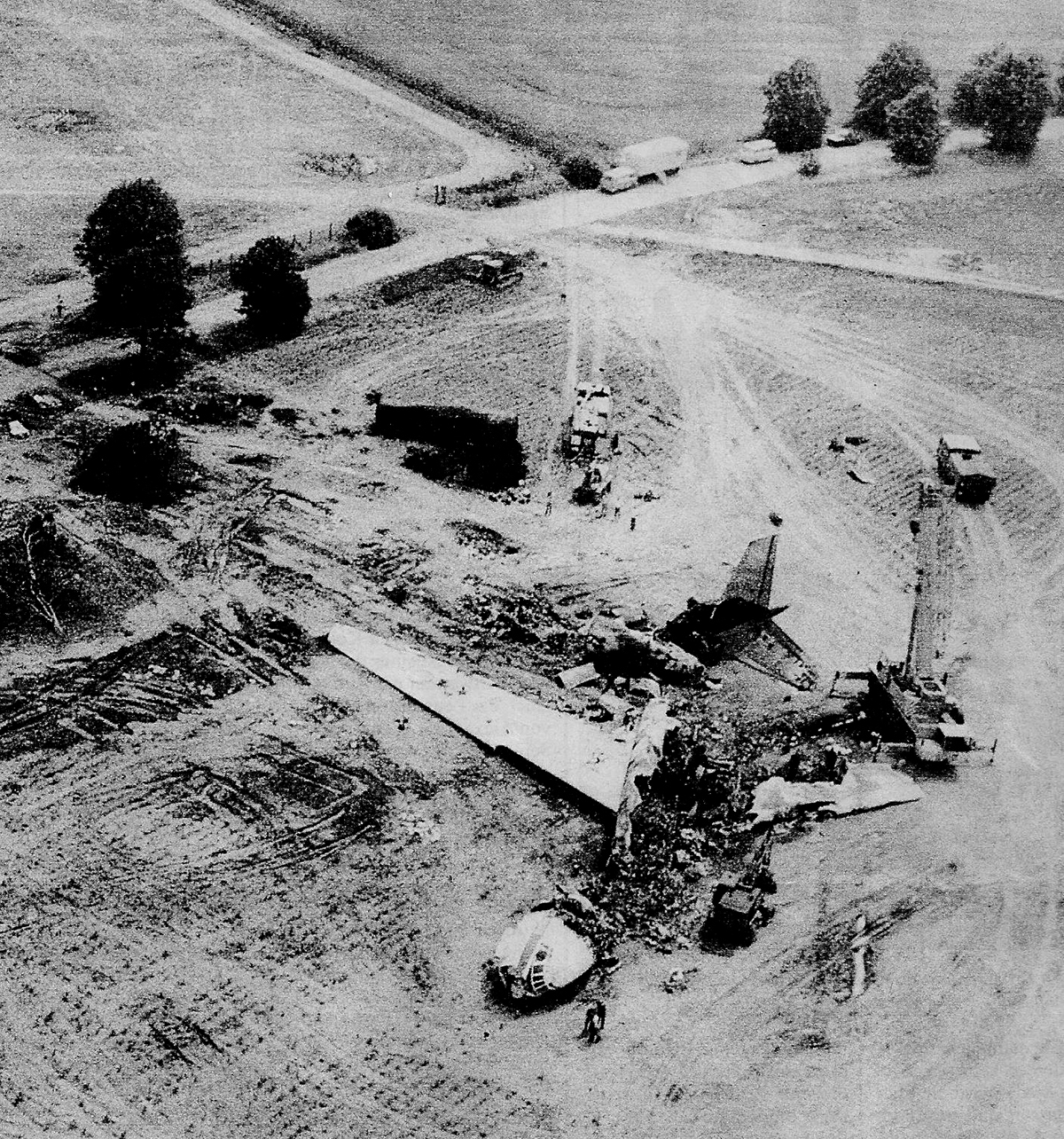
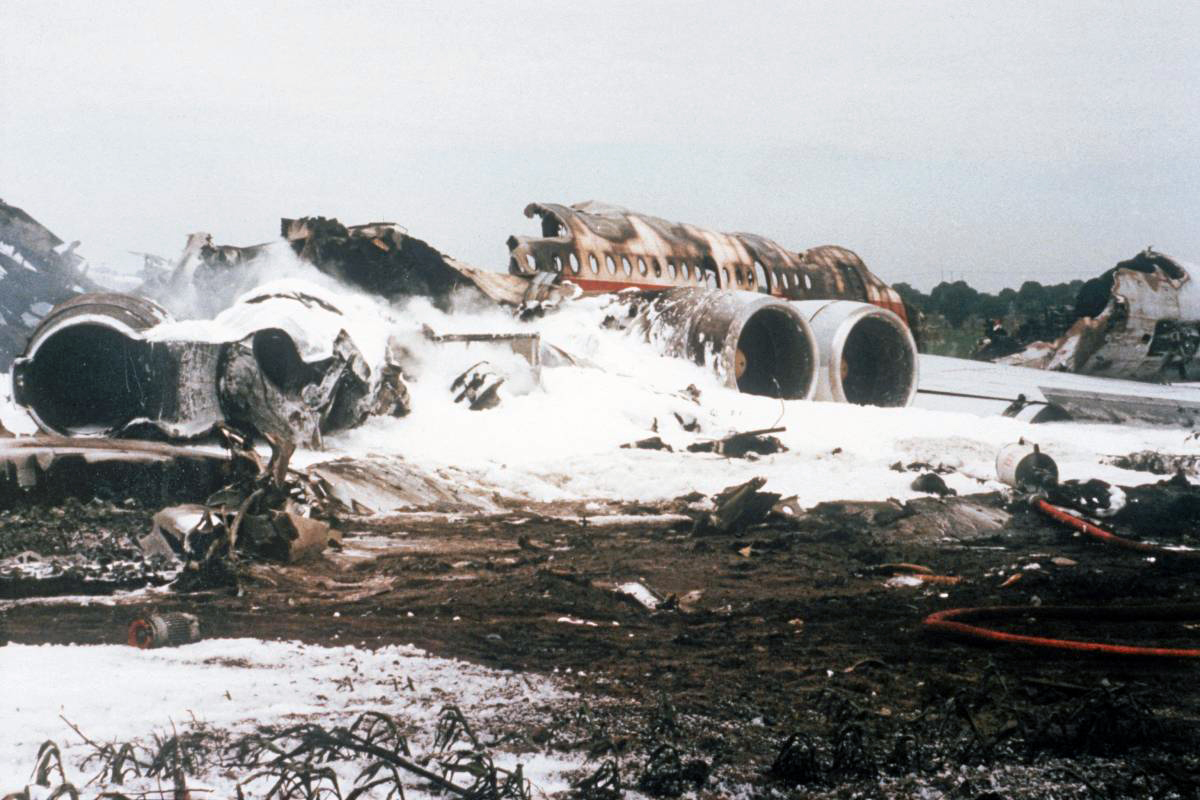


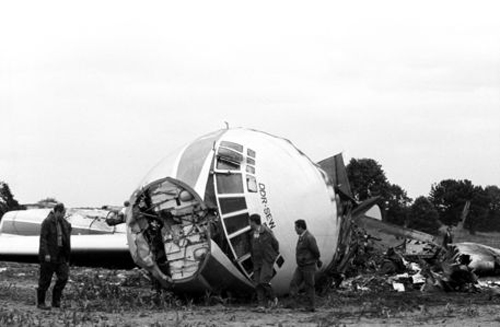
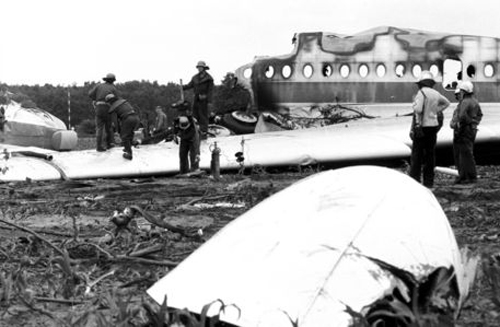


Crash of an Antonov AN-26 in Moscow
Date & Time:
Dec 7, 1986
Registration:
CCCP-88288
Survivors:
Yes
Schedule:
Moscow - Moscow
MSN:
11803
YOM:
1981
Crew on board:
5
Crew fatalities:
Pax on board:
0
Pax fatalities:
Other fatalities:
Total fatalities:
0
Circumstances:
Following a relative long mission, the crew made a short stop at Moscow-Sheremetyevo. The captain believed it was not necessary to add fuel for a short flight to Moscow-Bykovo despite the reserves were low. After takeoff, the crew encountered strong headwinds then the visibility dropped due to snow falls and low clouds. In such conditions, a direct approach was refused to the crew who should differ the landing procedure. Few minutes later, both engines failed due to fuel exhaustion. The crew completed a belly landing in an open field located about 3 km from Bykovo Airport. All five crew members escaped with minor injuries while the aircraft was damaged beyond repair.
Probable cause:
Double engine failure caused by a fuel exhaustion.






